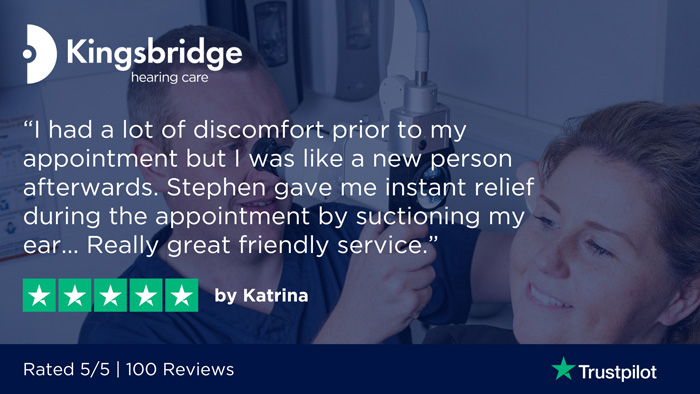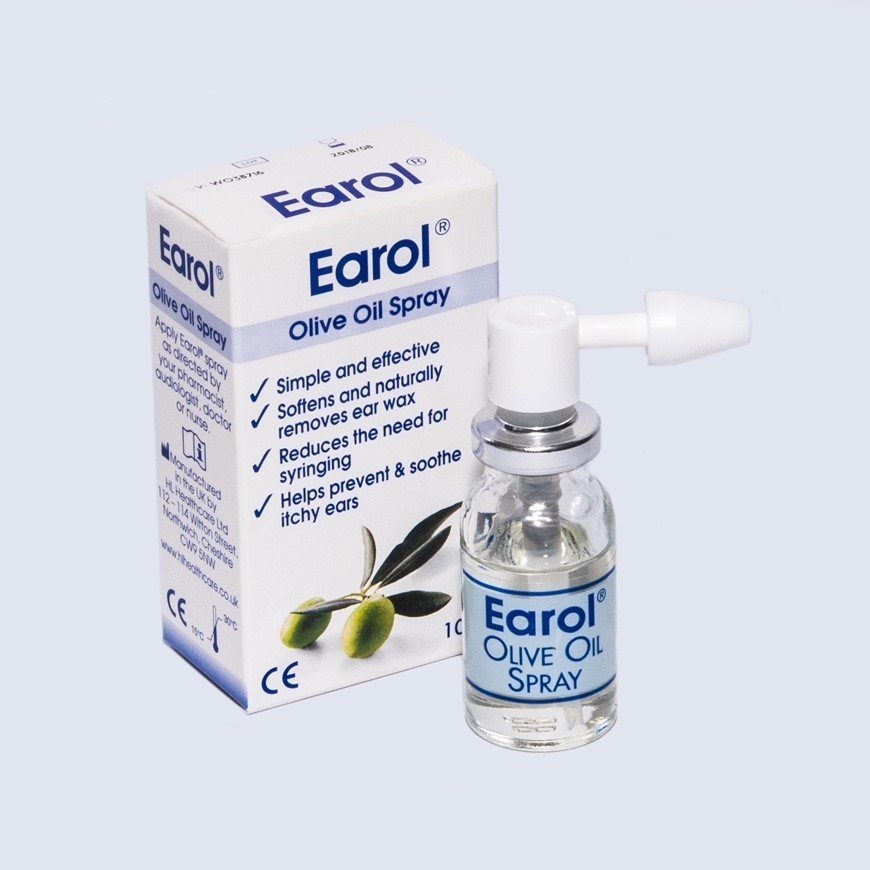
Earwax plays an important role within the ear canal; it helps to moisturise the skin and protect against bacteria and germs.
In a normal healthy ear, wax forms in the outer portion of the ear canal. Chewing motions and jaw movement help to gradually move wax out of the ear.
Does everyone have problems with earwax?
Most earwax comes out of the ear naturally without the need for any intervention; however, the use of ear-worn devices likes earphones or hearing aids can hinder normal wax migration, earwax also tends to become drier with age and is more likely to build up.
How do I know if I have an earwax blockage?
Earwax blockage can cause:
- a sensation of fullness in the ear
- earache
- a reduction in hearing
- tinnitus or dizziness
- interference with hearing aids, whistling (feedback) and/or a reduction in overall performance
I don’t have any symptoms of a blockage; do I need to get my earwax removed?
Most people do not need to have earwax removed.
Unless it is preventing a proper examination of your ears or is likely to affect the outcome of a hearing assessment, it is best to allow small amounts of earwax to come out naturally.
Can I remove earwax at home?
While some over the counter earwax softeners may be beneficial for smaller amounts of earwax, they are less likely to remove larger or impacted blockages and can make sometimes make symptoms worse as the softener mixes with the wax, further blocking the ear.
The use of foreign objects (like cotton buds), ear candles and DIY earwax removal devices available online are not recommended due to lack of effectiveness and potential risk of harm.
How can earwax be removed professionally?
The two main methods of wax removal used by clinicians are irrigation and microsuction.
Irrigation uses a low pressure, controlled jet of water at body temperature, to loosen earwax and flush it out of the ear canal.
Microsuction uses viewing apparatus to magnify the ear canal and a fine suction tube to remove the earwax.
At Kingsbridge Hearing Care, we routinely use microsuction for earwax removal consultations. Our ENT ear microscopes provide a superior field of vision to thoroughly exam your ears while our surgical grade suction equipment allows us to remove any wax blockages gently and efficiently.
Is earwax removal available on the NHS?
Yes, the NHS does provide earwax removal but service provision and waiting times can vary between Health Care Trusts, your local GP surgery should be able to provide you with information on services available in your area.
Do I need a GP referral to book an earwax removal appointment?
You do not need a GP referral to book an earwax removal appointment with Kingsbridge Hearing Care.
How much does earwax removal cost?
Earwax removal at Kingsbridge Hearing Care is a fixed cost of £80. In the unlikely event a second appointment is required to complete the wax removal, there is no additional charge.
**Please note a consultation fee of £35 will be chargeable if wax removal is not required **
How can I book an appointment?
You can book an appointment by completing our earwax removal enquiry form or get in touch via our Contact Us Page.
Is there anything I should do before attending my appointment?
When you book an appointment, you will be sent a link to an earwax removal consent form with questions about your medical history and current symptoms. Please complete this before attending the clinic.
Should I soften the earwax before my appointment?
Dry earwax can stick to the skin and tiny hairs in the ear canal, softening it prior to removal helps to loosen the earwax, making it as comfortable as possible and reducing the time needed to complete the procedure.
Unless you have been previously advised to keep your ears dry, please only use medical grade olive oil in the days leading up to your appointment.
Not all ear wax softeners are compatible with microsuction and using alternative drops/sprays increases the likelihood of a second visit being required to complete the procedure.
At Kingsbridge Hearing Care, we recommend Earol, an easy-to-use sterile olive oil spray. The nozzle applicator disperses the oil into the ear canal in a fine mist, allowing it to coat and soften the wax with less likelihood of it blocking the ear, when compared to olive oil inserted via a dropper.

What happens during an earwax removal appointment?
Watch our walkthrough video to find out more about our earwax removal appointments.
Are there any risks or complications with earwax removal?
Kingsbridge Hearing Care staff have undergone specialist accredited training in earwax removal to minimise the risk of any harm, however, to make the procedure as safe as possible, it is also essential to provide us with accurate medical history information and remain still during the procedure.
Earwax blockages can sometimes conceal other ear conditions, if we find evidence of an infection or a previously undiagnosed ear condition or if the earwax cannot be safely removed it may be necessary to refer you to another medical professional.
What if the earwax cannot be removed?
In some cases, it may not be possible to remove all the earwax in one visit, particularly if it has not been pre-softened with sterile olive oil, or if an inappropriate wax softening agent has been used. In this case you will be advised to soften the wax with sterile olive oil and another appointment will be booked to complete the procedure.
Can I prevent wax from building up again?
Some people require ongoing management for earwax. As reasons for earwax buildup vary from person to person, we make recommendations for ongoing management on a case-by-case basis.
Wax Removal Enquiry
Book a consultation now on
028 9066 7030
Part of The Kingsbridge Healthcare Group

